Background and context
The decarbonisation of the energy system will bring a significant, perhaps even pervasive, electrification of end-uses in all consumer categories and in a number of sectors, such as in heating and cooling and in transport. In conjunction, the proliferation of variable renewable energy sources – the main technological option for decarbonising the energy system – is already exerting stress on transmission and distribution networks. Considerable investments in network infrastructure are expected to be required in the next decades to accommodate these trends.
On the other hand, the diffusion of distributed energy resources, digitalisation, and policy and regulatory impetus set active customers at the centre of the energy transition, which offers significant opportunities for ‘smarter’ planning and operation of power systems.
In this context, the role of demand-side flexibility in enabling cost-efficient power system operation and large scale integration of renewable energy is coming to the forefront.
Our role
We study and test the interoperability of Demand Side Management and Flexibility Services provision. As an example, in our laboratories, we have realised and tested an end-to-end small scale system in the lab from the customer to the energy provider and the DSM concept has been followed by achieving communication between consumer-energy provider. Remote load control has been accomplished. Afterwards, the first interoperability test was carried out by embedding a new smart meter. Three interoperability layers have been tested. The importance of a DSM program has been highlighted and its feasibility has been proved emphasizing on the customers' involvement and active participation in reducing consumptions.
Main publications
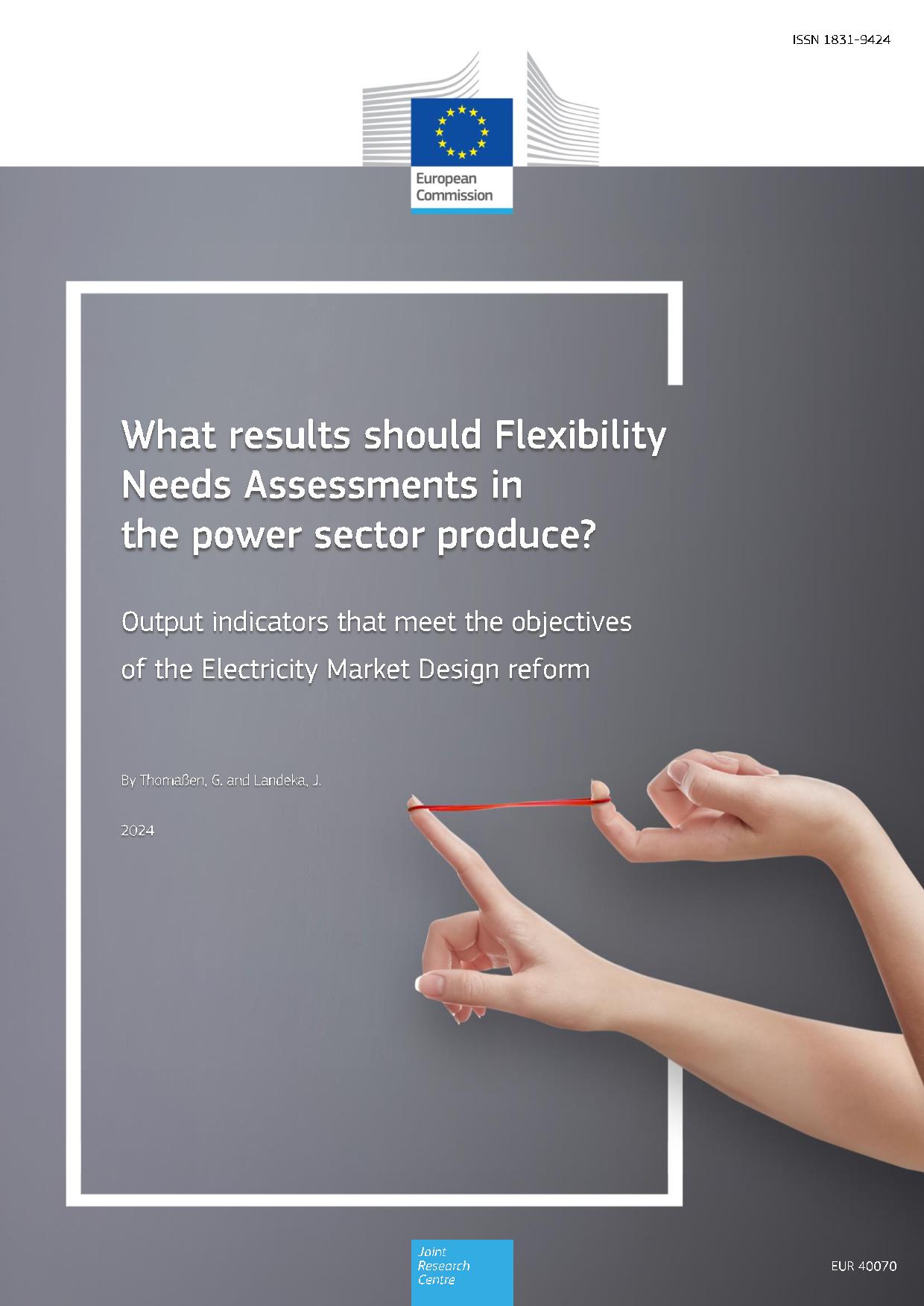
What results should Flexibility Needs Assessments in the power sector produce?
The recently adopted Electricity Market Design (EMD) reform includes provisions for the creation of Flexibility Needs Assessments (FNAs) on the national and European level. The reform sets a focus on advancing decarbonization while maintaining a high level of supply security. The FNAs should further enable Member States to set up mechanisms to procure additional flexibility to meet any identified inefficiencies due to an insufficiently inflexible the system. Against this background, the JRC reviewed existing flexibility assessments in the literature based on what outcomes they produce. Based on this review, we propose that FNAs in Europe should assess three key areas: renewable integration, ramping needs and reserve requirements. We further propose concrete indicators, which allow to derive net flexibility needs – taking into consideration the capabilities already present in the system – and enable Member States to procure any missing volumes of flexibility.
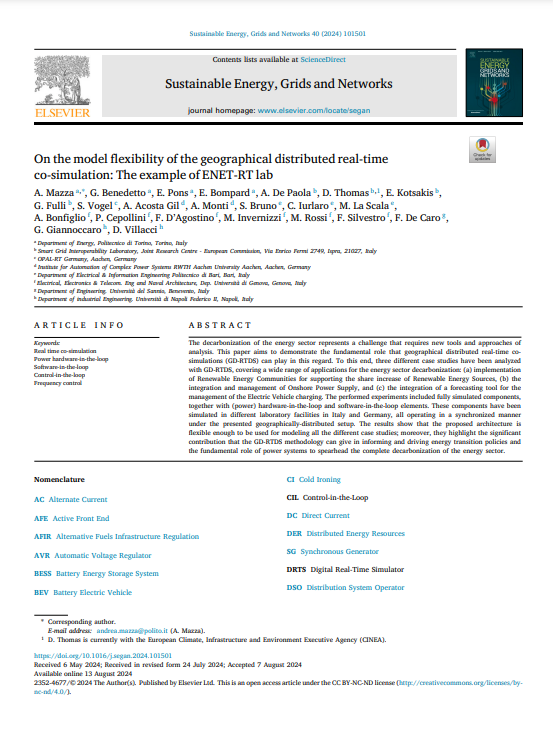
2024 - On the model flexibility of the geographical distributed real-time co-simulation: The example of ENET-RT lab
The decarbonization of the energy sector represents a challenge that requires new tools and approaches of analysis. This paper aims to demonstrate the fundamental role that geographical distributed real-time co-simulations (GD-RTDS) can play in this regard. To this end, three different case studies have been analyzed with GD-RTDS, covering a wide range of applications for the energy sector decarbonization: (a) implementation of Renewable Energy Communities for supporting the share increase of Renewable Energy Sources, (b) the integration and management of Onshore Power Supply, and (c) the integration of a forecasting tool for the management of the Electric Vehicle charging. The performed experiments included fully simulated components, together with (power) hardware-in-the-loop and software-in-the-loop elements. These components have been simulated in different laboratory facilities in Italy and Germany, all operating in a synchronized manner under the presented geographically-distributed setup. The results show that the proposed architecture is flexible enough to be used for modeling all the different case studies; moreover, they highlight the significant contribution that the GD-RTDS methodology can give in informing and driving energy transition policies and the fundamental role of power systems to spearhead the complete decarbonization of the energy sector.
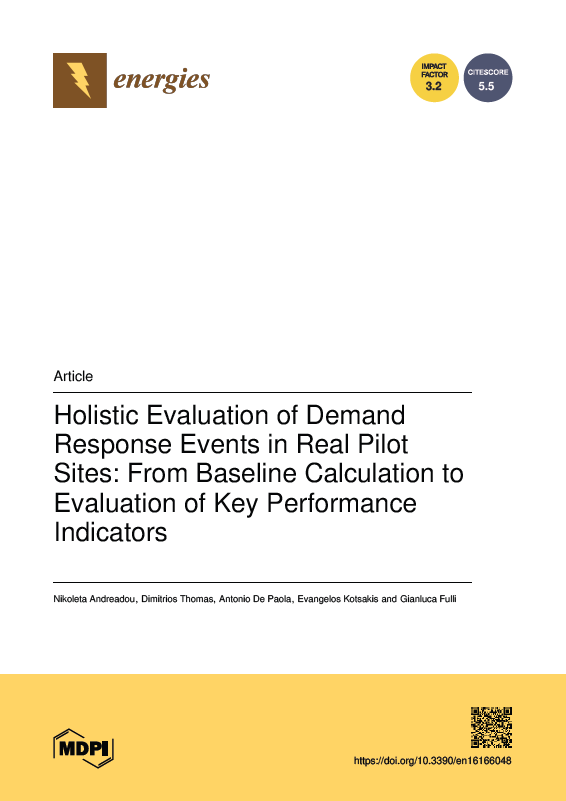
2023 - Holistic Evaluation of Demand Response Events in Real Pilot Sites: From Baseline Calculation to Evaluation of Key Performance Indicators
Explicit demand response plays a significant role in the future energy grid transition, as it involves end consumers in smart grid activities and, at the same time, exploits the potential of flexibility, giving the opportunity to grid operators to accommodate a total amount of energy without the need to reinforce the grid infrastructure. For evaluating the successfulness of a demand response program, thus, evaluating its advantages, it is fundamental to have an accurate baseline curve consumption along with meaningful key performance indicators. In this work, we propose a novel way of calculating the baseline consumption using artificial intelligence techniques. In particular, regression models have been applied to a database of historical data. In order to present a complete evaluation of demand response programs, we present five key performance indicators (KPIs). The KPIs have been selected so as to depict the successfulness of the explicit demand response program. We suggest a novel way of evaluating two of the five KPI using a quantitative approach. We also apply the proposed methodology for baseline calculation and KPIs evaluation in a practical example: two pilot sites have been used and real-life scenarios of demand response events have been applied for this scope to actual nonindustrial consumers and especially residential consumers. The baseline has been calculated for these pilot sites and the KPIs have been evaluated for them. The presented results complete the picture of evaluating a real-life demand response program and show the effectiveness of the selected approach. The proposed schemes for baseline calculation and KPI evaluation can be used by the scientific community for evaluating future demand response programs, especially in the residential sector.
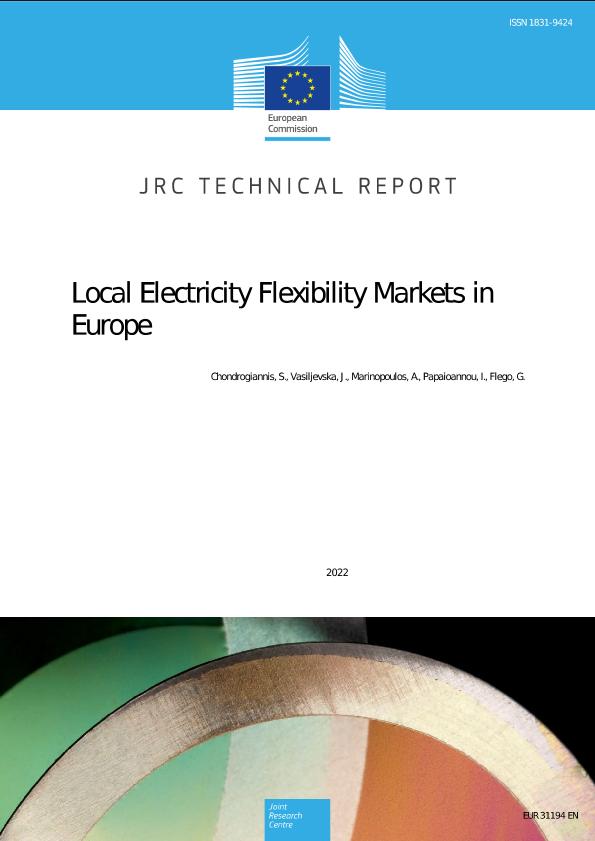
2022 - Local electricity flexibility markets in Europe
This report reviews some of the main projects on developing flexibility markets in Europe. The analysis focuses on cases aiming primarily on the provision of local flexibility services to Distribution System Operators through market-based instruments and the role of regulation in promoting the use of flexibility. Specifically, the following projects/markets have been reviewed where in parenthesis the country in which have been developed:
Sthlmflex (Sweden)
IntraFlex (UK)
NorFlex (Norway)
GOPACS (the Netherlands)
Enera Flexmarkt (Germany)
GB flexibility tenders by DSOs (UK)
ENEDIS flexibility tenders (France)
The following aspects are examined in more detail: Pre-qualification procedures, specification of flexibility products, the trading mechanism, and activation and settlement. Whenever possible information on traded volumes and prices has been gathered. Common characteristics as well as differences between the reviewed local flexibility markets are discussed, while current trends and challenges for the future are identified.
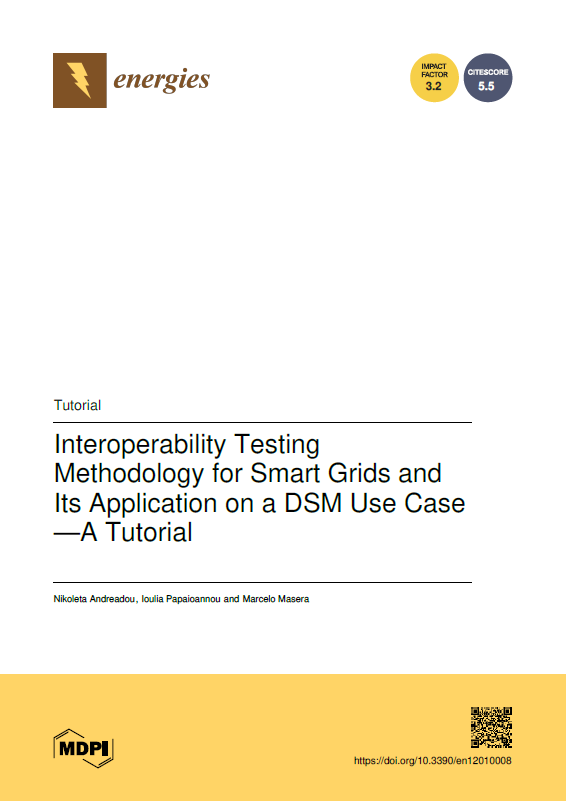
2019 - Interoperability Testing Methodology for Smart Grids and Its Application on a DSM Use Case—A Tutorial
Interoperability is a challenge for the realisation of smart grids. In this work, we first present an interoperability testing methodology, which is substantial to perform interoperability tests for the smart grid. To show its applicability and facilitate its comprehension, we present an example by applying it on a Demand Side Management (DSM) use case. The DSM use case is chosen because it is a major topic for modern grids and it involves the participation of many actors. The tutorial exemplifies the interactions among those actors. The Smart Grid Architecture Model SGAM framework is used, where the mapping of the use case is presented along with the Message Sequence Chart (MSC). Then we describe the profiling of the equipment, relevant technical information and standards, which form the basis for the design and execution of the interoperability tests. We focus on the technical part of the interoperability testing; therefore, attention is focused on the information and communication layer. We present how the interoperability tests should take place and we analytically show the respective Test Cases (TC). The verdict of the test should be either PASS or FAIL. The paper shows how to successfully use the methodology for interoperability testing on a specific use case, whereas its applicability can be extended to any smart grid interoperability use case.
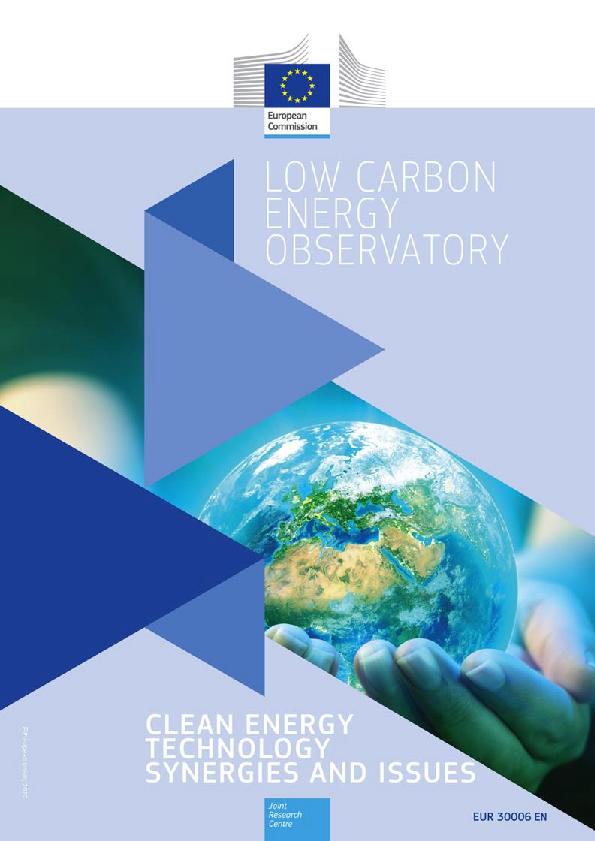
2019 - Clean energy technology synergies and issues
The objective of this report is to provide recommendations for long-term R&D priorities for crosscutting EC funded projects in the energy domain. Nineteen JRC experts analysed synergies and issues of the future energy system in following areas:
* objectives of Horizon 2020 projects were compared with national and international projects;
* key energy technologies for a cost-effective energy transition using the energy system model JRC-EU-TIMES;
* development trends of LCEO technologies with regard to their potential to provide grid support services; and
* R&D synergies between LCEO technologies to accelerate development and use research budgets efficiently.
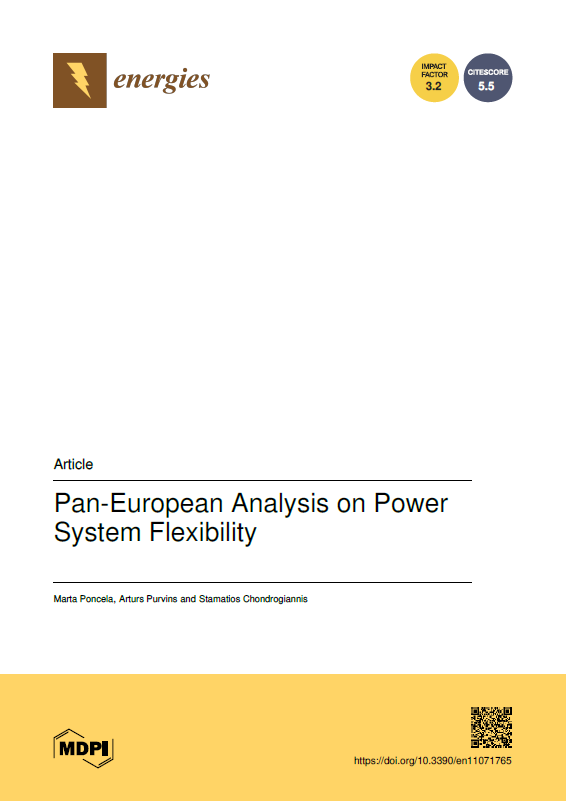
2018 - Pan-European Analysis on Power System Flexibility
Ongoing deployments of intermittent non-synchronous power generators (i.e., wind turbines and photovoltaics) challenge power (electricity) system security in terms of matching power generation and demand. Higher flexibility in the future generation fleet and power demand are likely to play an essential role in maintaining secure operation of the power system. This paper proposes a stepwise methodology based on a set of indicators for future power system flexibility analysis through assessing (i) flexibility requirements, (ii) available flexibility resources, and (iii) power system adequacy. The proposed methodology is applied to a European case for 2020 and 2025 scenarios. The insights gained from this study can be used as input in distributing power balancing resources and to introduce new balancing products in a power market. Benefits of the integrated energy market are presented.
